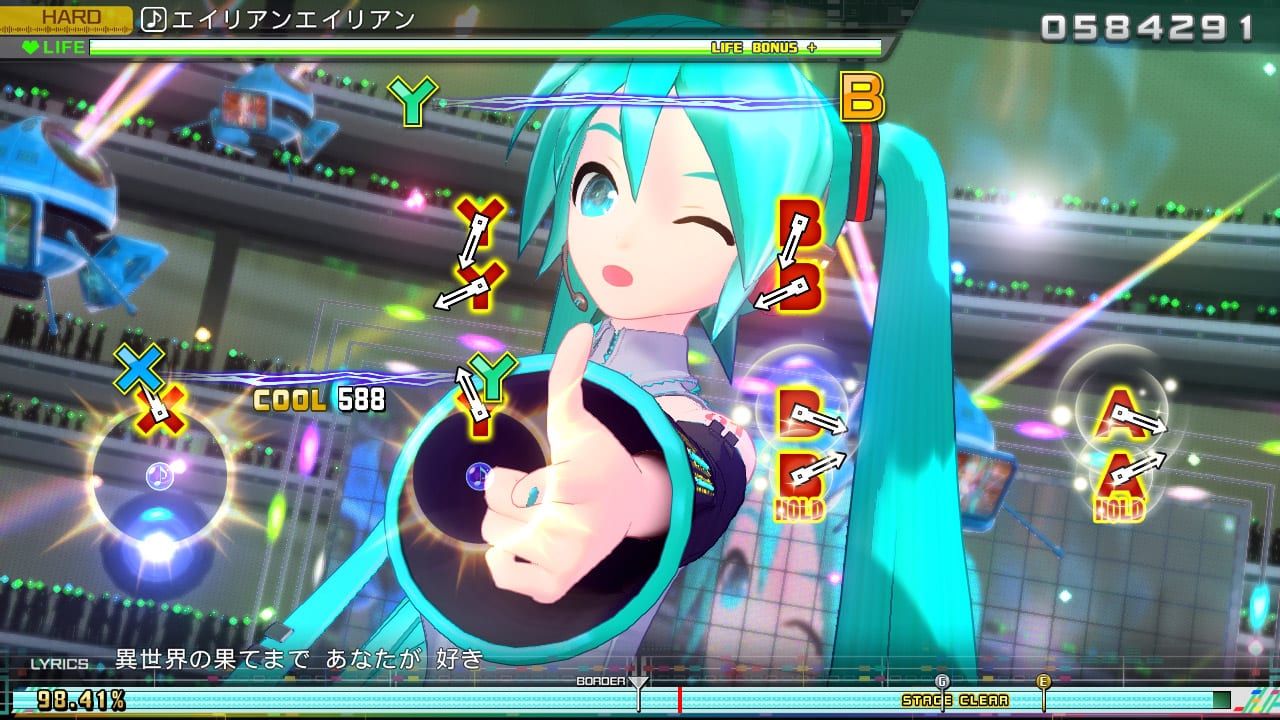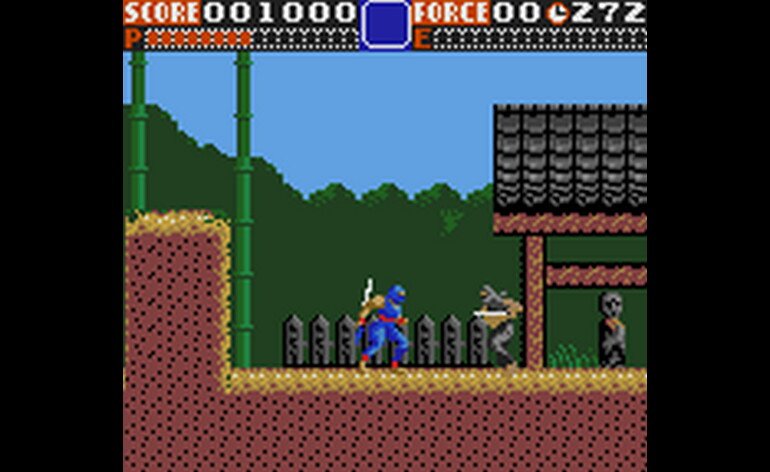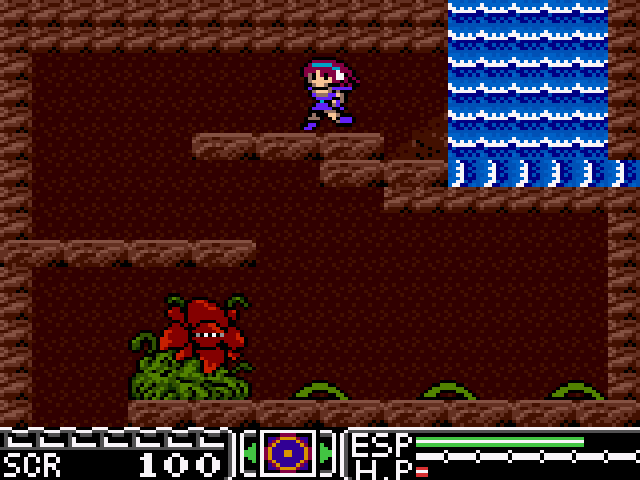1. Ys: The Oath in Felghana PSN
Vita2. Final Fantasy XII: The Zodiac Age
Switch3. Super Mario Party
Switch4. Moss
PSVR5. Paper Mario: Colour Splash
Wii U6. The Firemen
SNES7. Bishoujo Senshi Sailor Moon
SFC8. Kuukiyomi: Consider It!
Switch eShop9. Valkyria Chronicles
Switch eShop10. Illusion of Time
SNES11. Trials of Mana
Switch12. Undertale
Vita13. Rastan
SMS14. Rainbow Islands
SMS 15. River City Girls
Switch16. Animal Crossing: New Horizons
Switch17. Streets of Rage 4
Switch eShop18. Dragon Warrior IV
NES19. Super Tennis
SNES20. Castlevania III: Dracula's Curse
Switch eShop21. Pilotwings
Switch eShop22. Castlevania: The Adventure
Switch eShop23. Streets of Rage Game Gear *NEW*
24. Hatsune Miku: Project DIVA Mega Mix Switch eShop *NEW*
25. Ninja Gaiden Game Gear *NEW*
26. Psychic World Game Gear *NEW*
27. The G.G. Shinobi II: The Silent Fury Game Gear *NEW*
28. Sonic the Hedgehog: Triple Trouble Game Gear *NEW*Streets of Rage
I recently decided to splash out on a modded game gear, which comes with a new LCD screen and makes the console actually feel playable. Because my Game Gear library is pretty small, I also decided to pick up a selection of new games for the system. The first of these games I actually sat down to play was Streets of Rage.
Streets of Rage on Game Gear is an interesting oddity, for fans of the 16 bit title. The game is fairly faithful to the content which is included, although there is also a lot of stuff that had to be cut. First of all, there’s only 2 playable characters: Axel & Blaze. Their moveset is most intact, although weirdly there doesn’t seem to be a way to attack when grappling an enemy other than your throw or vaulting over them and slamming them. Also missing is the iconic police support, presumably due to the system lacking a third face button. Finally, the game is also missing 3 of the original’s 8 stages. The missing stages are stage 2 (backstreets, with the wolverine boss), stage 3 (the beach with the wrestler boss) and stage 7 (the elevator stage). This makes for a slightly odd experience when you finish stage 1 and jump straight to the bridge which is normally stage 4.
The game looks OK for the system, although the sprits feel a bit crushed, I guess because they were made for Master System and shrunk to Game Gear resolution to keep everything full screen. It also seems quite technically impressive too, with lots of moving sprites on screen. Unfortunately, this is where it most lets itself down – the performance here is shocking. When enemies are on screen your button presses frequently don’t register, and it gets worse the more there are. Blaze’s combo is also broken – enemies break out of stun too fast with her slower combo here, so her final move misses 99% of the time and leaves her very vulnerable.
I had fun trying out this game, and it was interesting to see an 8 bit version of it – but it’s really not a must play by any means. Buy if and try if for cheap if you’re a fan, but otherwise, skip it.
Hatsune Miku: Project DIVA Mega Mix
I love the Project DIVA series, especially the entires on Playstation Vita (DIVA F and F 2nd), so I was very excited to pick up this game when it launched on Switch. This is a compilation of 130 or so (including the DLC) songs, mostly from previous entries in the series although with a handful of new ones thrown in, so a ton of game for your money.
However, upon playing, it took me a while to get into this one, because there’s some differences in the gameplay compared to my favourites. See, DIVA F and F 2nd were designed for console & handheld first and foremost, so the gameplay mechanics were centred on that. You press the face buttons in time with the circle, square, X and triangle icons as they appear on screen, arrows require you to press the corresponding button plus the d-pad pointing the same way, and star symbols required swiping the touch screen. However, DIVA Mega Mix aims to replicate the DIVA arcade games, and brings over some changes which take some adjusting to.
First of all, arrows are gone, as the arcade game uses big button pads to play and only has one for each symbol. Instead, sometimes you’re asked to hit multiple buttons at once (X + circle for example). 130ish songs down and I’m still only just getting my head around these actions when they appear in songs. The game also asks you to hold down a buttons sometimes, whiulst contuinung to hit others. This can be complicated too. In all honesty, both of these mechanics feel a bit rough on a controller, but I imagine they work great on the arcade pad. Unfortunately, the arcade pad costs a bomb, so I’m stuck with the less ideal way to play.
Still, as I worked through the game and got used to the new mechanics, I did once again find myself having a lot of fun. Whilst the changes do make the game feel less fun to play without the arcade style setup, the core gameplay is still fun enough that it’s enjoyable, and the music still has a lot of variety too.
There’s not much more to say about Project DIVA Mega Mix. In terms of value, it’s a great starting point for the series due to the massive amount of content on offer here. However, I’d still recommend people start with one of the PS3 & Vita entries in the series if they want to experience the series at its best.
Ninja Gaiden
More Game Gear next. A little whilst back I played through the Master System version of Ninja Gaiden, a game not many people even know exists. That game, whilst completely different to the NES or even arcade versions, is actually pretty great and definitely worth picking up. Here is another totally forgotten about version of Ninja Gaiden, and despite being on Game Gear, it’s not a port of the excellent SMS version. Unfortunately, there’s probably a reason this one has been forgotten - it’s a totally forgettable experience.
The game takes place over 5 fairly short levels, and features some Ninja Gaiden staples – you run through multiple levels at high speed, slashing enemies and using your ninja magic to progress. This game feels somehow even more fluid then previous entries as you can swing your sword whilst running. However, that’s about all there is to say that’s good about the game, as it’s a very generic experience otherwise.
The game is very easy for 90% of the experience – I never came close to dying at any point in the first 4 levels as the platforming is very simple and the game drowns you in health potions throughout. There’s not a lot of variety for the first 3 stages, although stage 4 is an interesting climbing stage where you bounce between 2 buildings as you climb upwards and stage 5 features an extended section where you manoeuvre around walls and pillars as there is no floor at all. Unfortunately, the only real challenge comes from the final boss who is quite tough in his 3rd form and sends you back to the wall section of stage 5 when he beats you – so I got sick of that novelty pretty quickly as I replayed it again and again…
In terms of NES Ninja Gaidens other strong points, Game Gear Ninja Gaiden still fails to match up. The story is barely there, and whilst there are cutscenes they’re often 10 seconds long and feature one image and text only. The graphics are quite bland and feel very flat, and the music is nothing memorable at all.
Overall, Ninja Gaiden for Game Gear is not very good, and probably not worth your time. However, it is cheap and it’s not a terrible experience, so if you want to give it a go sometime, why not? I still think you should pass though.
Psychic World
I went into Psychic Worlds hoping 3rd time’s the charm with my Game Gear acquisitions, after 1 interesting but slightly janky port and one pretty medicore entry in a popular series. Psychic World is a game which appears on both Game Gear and Master System, but is actually a fairly different game on both – the premise and level themes are the same but the level layouts are different.
The plot of the game is that you and your sister work for a scientist dude who is researching psychic powers. One day, the creatures he was experimenting on escape and kidnap your sister, so you fit a special helmet which boosts your psychic abilities and go after her. You progress through 5 or so worlds making use of a variety of psychic powers to progress. Initially, you can run and jump and shoot your basic psychic blast, which is weak but fairly all purpose. However, by killing enemies you can acquire new powers to use. These come in 2 forms.
First off is alternative attack powers, which must be won by defeating stage bosses first, but then regular enemies can also drop them (and collecting multiple boosts the power and spread of the attacks). These com in fire, ice and sonic powers, and each are effective vs different enemies and have additional level functions – ice can create platforms which can also be melted with fire, and sonic waves break certain blocks. Attack powers cost no e.s.p bar to use.
The second type of psychic power are utility abilities which can be dropped randomly by enemies. Once acquired, they can be activated at any time, but require some of your esp bar to use. Examples include a power to jump higher, and one which resets you back to the start of the level – which is essentially a retry button if you screw up and are low on health, although iirc the game has unlimited continues. The most useful power though, which you’ll use a lot, is the invincibility power, which renders you impervious for a short time. This makes bosses and tricky platforming sections much easier.
I actually really enjoyed my time with the game. It’s not perfect – it’s too short and a little easy (although a few levels took several tries), and I triggered the reset ability by accident a few more times than I’d like. The trick to getting the good ending is a bit obtuse as well. But it’s a fun little 8 bit action game and I think it’s worth your time. The music is good for Game Gear and it looks pretty nice too – certainly better than the Master System version. This one is good!
The GG Shinobi II: The Silent Fury
Although I bought a bunch of new Game Gear titles, I actually already had one which been sat in the backlog for quite a while, and so I decided I would play through that as well. The G.G. Shinobi II is the sequel to the rather good first title, and so I was expecting good things. That game was a bit tough towards the end though, so I wasn’t expecting it to be easy.
In the GG Shinobi games, you play as a band of ninjas, all in different colours Power Rangers style, who all have different abilities. Each ninja has different weapons, inate abilities and magic – Red has a short range sword and a teleportation spell to jump to the level exit fast when revisiting, but no inate ability. Blue uses a grappling hook to attack, and can also use it to swing over gaps, plus a tornado spell that allows him to fly briefly. Yellow can wall on water and throws a boomerang shuriken which can be thrown upwards too. His spell grants temporary invincibility to attacks. Pink throws bombs which arc downwards, and can walk on ceilings. His spell is a rather useless one which lights dark rooms. And finally, Green throws throwing stars which are weak but ranged, and can double jump like Joe Musashi. His spell creates an earthquake to damage enemies and break certain walls.
Despite the interest band of abilities, you start quite weak. Red is your only ninja initially, and you have only 4 health to take hits with. However, you can choose from one of 4 levels to begin with, and upon finishing each you rescue one of the other 4 ninjas. You’ll need their abilities to revisit levels too, as each level contains a hidden crystal needed to unlock the final stage, plus a health increase item to bring your total health up to an eventual 12 points, 2 at a time. Revisiting stages with new powers is fun and adds an exploration element to the game.
Upon getting all 4 crystals though, you lay siege to the enemy castle for the 5th, and this is where things get rough. The final stage is an incredibly tough gauntlet of platforming challenges interspersed with boss fights throughout a complex labyrinth – and it makes those health power ups feel a but wasted as most deaths come from instant death spike pits rather than enemies. It takes some practice to get through the stage, but eventually I managed, and the bosses were easy enough. On the plus side, despite the harsh final level which took me as long to beat as the rest of the game put together, it’s still notably easier than the even more brutal final level in the original GG Shinobi game.
It has a bit of a rough difficulty progression, but The G.G. Shinobi II is a great game for the Game Gear, and must own for the platform. Its undoubtedly one of the best games on the system and it looks, sounds and plays great. I highly recommend it if you want to try some portable 8-bit Sega goodness.
Sonic the Hedgehog Triple Trouble
Choo-choo, the Game Gear train keeps on chugging. Sonic Triple Trouble is the 4th portable Sonic title for Game Gear, after the ports of Sonic 1 & 2 for Master System, and also Sonic Chaos (which I think was ported from Game Gear to SMS instead of vice versa). This is a sequel to Sonic Chaos (it’s called Sonic & Tails 2 in Japan, Sonic Chaos is 1) and the first Game Gear exclusive classic Sonic title of the bunch.
I think the Triple Trouble in the title refers to the games 3 antagonists. Whilst you can play as either Sonic or Tails this time round, you’ll be vexed by Knuckles the Echidna, back in his antagonist days, as well as the ever present Dr. Robotnik. New to this game is Nack the Weasel, an opponent who only shows up in special stages to fight you for a chaos emerald. These special stages caused me some confusion, as I’m not really sure how you trigger them. I know you have to find a special monitor in each stage, but hitting it didn’t always make a special stage appear so I guess there’s some other criteria.
Anyway, the game otherwise plays similarly to Sonic Chaos. To account for the zoomed in view, the game is pretty easy and doesn’t feature too many enemies. Running into enemies also doesn’t seem to make you lose all of your rings, just some of them. The zoomed in view still causes some issues, especially in later levels where more bottomless pits feature, and I can’t help but feel this would be a better Master System game than a Game Gear one. Nonetheless, the stages are fun enough, if mostly forgettable, besides a a fun little train section I enjoyed.
Sonic Triple Trouble is a little pricier than a lot of Game Gear games, although it’s not crazy expensive by any means. Like all Sonic games on the system, it’s not really a must own. The original 8 bit Sonic game is still the best by far, but you definitely want to play that on Master System instead. Still, I had a fun hour or so playing through this game, and I liked it enough to recommend it. Give it a go sometime and see if you agree.








